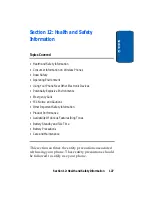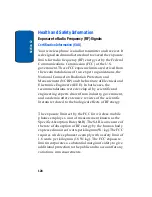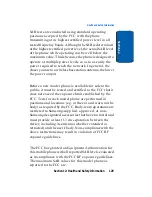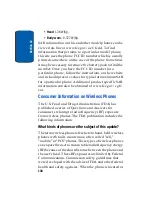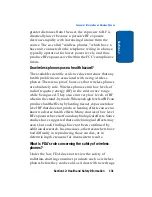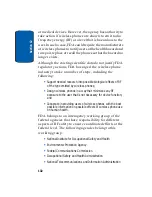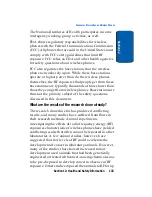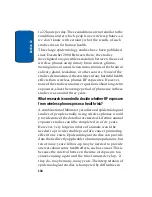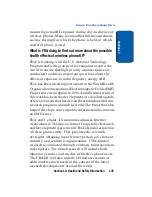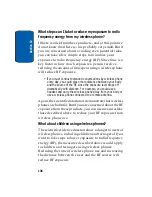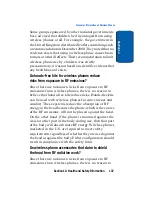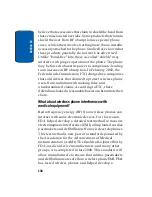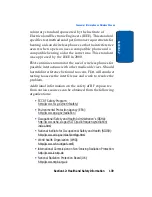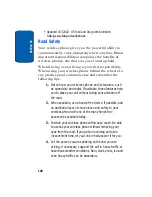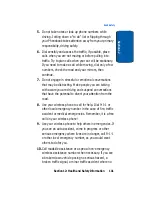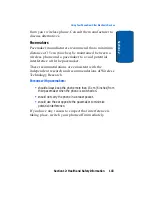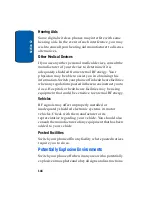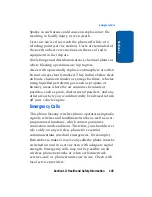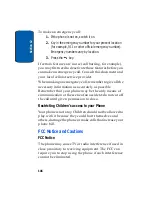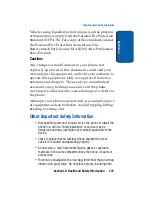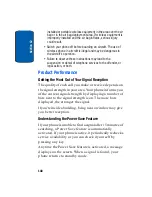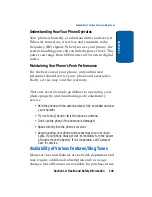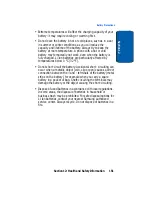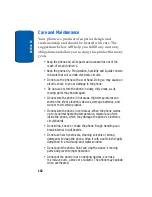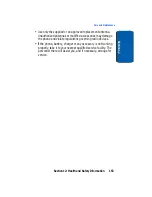
Sect
ion 12
140
•
Updated 4/3/2002: US food and Drug Administration
http://www.fda.gov/cellphones
Road Safety
Your wireless phone gives you the powerful ability to
communicate by voice, almost anywhere, anytime. But an
important responsibility accompanies the benefits of
wireless phones, one that every user must uphold.
When driving a car, driving is your first responsibility.
When using your wireless phone behind the wheel of a
car, practice good common sense and remember the
following tips:
1.
Get to know your wireless phone and its features, such
as speed dial and redial. If available, these features help
you to place your call without taking your attention off
the road.
2.
When available, use a hands-free device. If possible, add
an additional layer of convenience and safety to your
wireless phone with one of the many hands free
accessories available today.
3.
Position your wireless phone within easy reach. Be able
to access your wireless phone without removing your
eyes from the road. If you get an incoming call at an
inconvenient time, let your voice mail answer it for you.
4.
Let the person you are speaking with know you are
driving; if necessary, suspend the call in heavy traffic or
hazardous weather conditions. Rain, sleet, snow, ice and
even heavy traffic can be hazardous.
Summary of Contents for SGH x495 - Cell Phone - T-Mobile
Page 4: ......
Page 8: ...Table of Contents 4 ...
Page 18: ...14 Section 1 ...
Page 42: ...38 Section 3 ...
Page 56: ...52 Section 5 ...
Page 58: ...54 Section 5 ...
Page 68: ...64 Section 6 Note This function is available only if it is supported by your service provider ...
Page 118: ...114 Section 9 ...
Page 130: ...126 Section 11 ...
Page 158: ...Section 12 154 ...
Page 168: ...164 Section 13 ...
Page 172: ...168 ...


